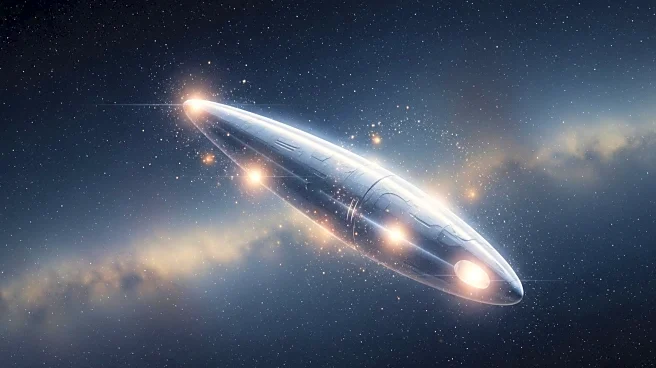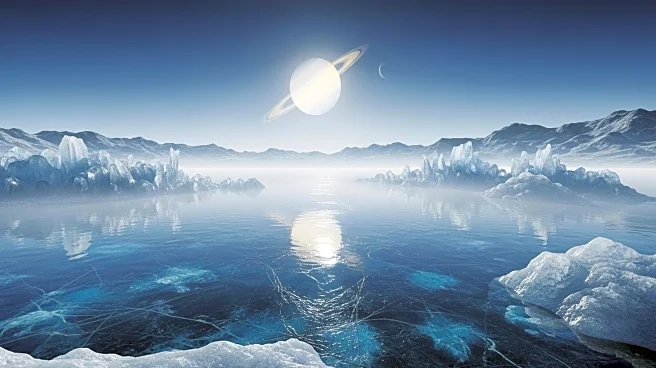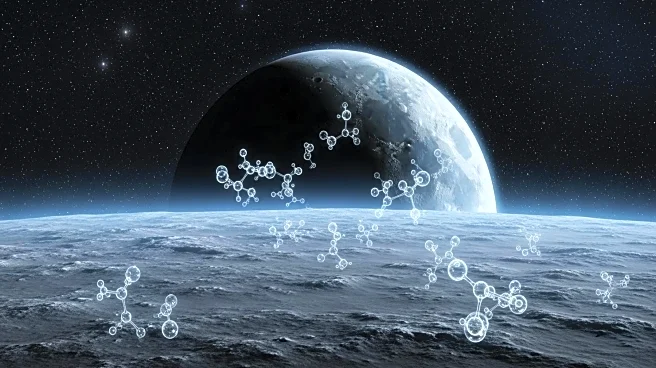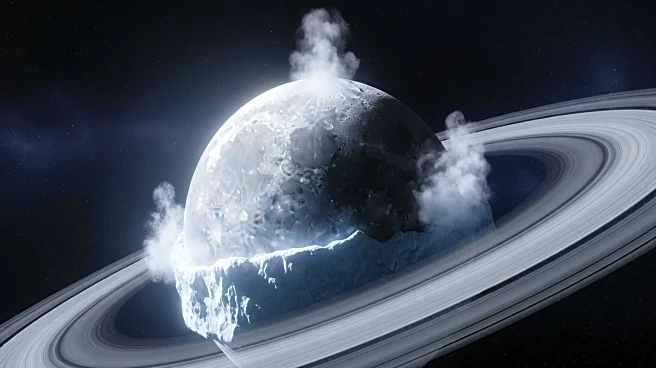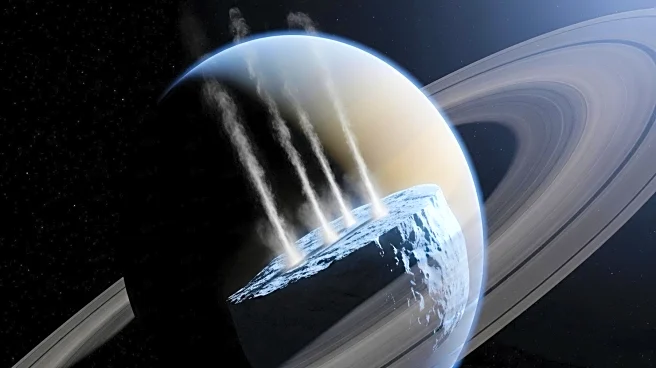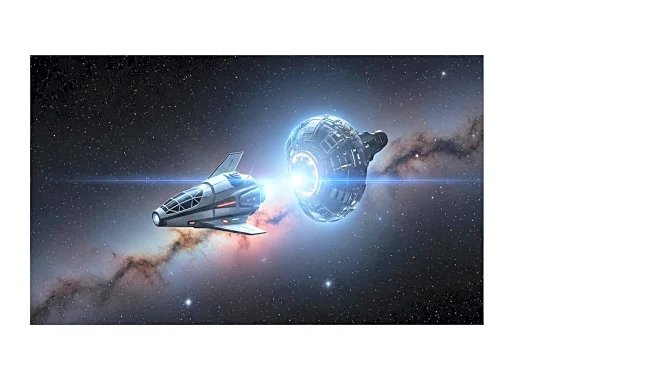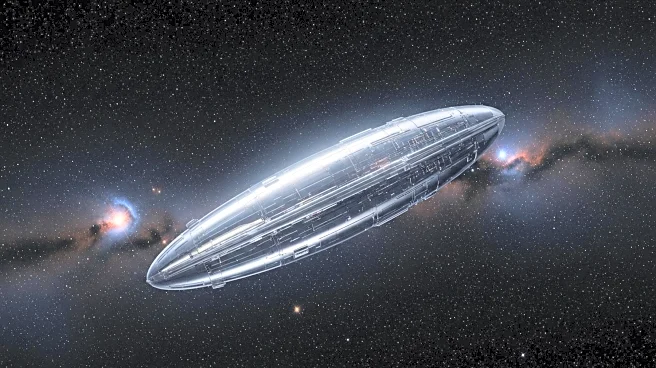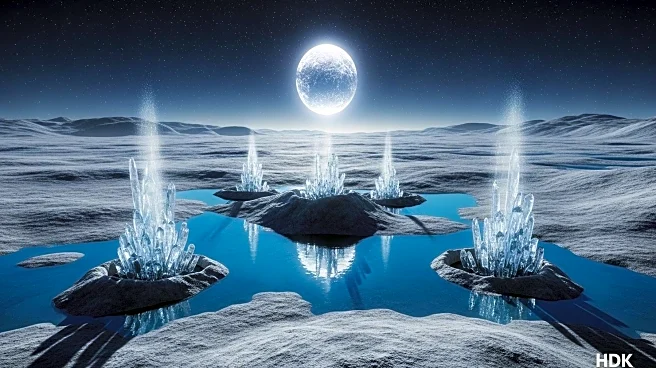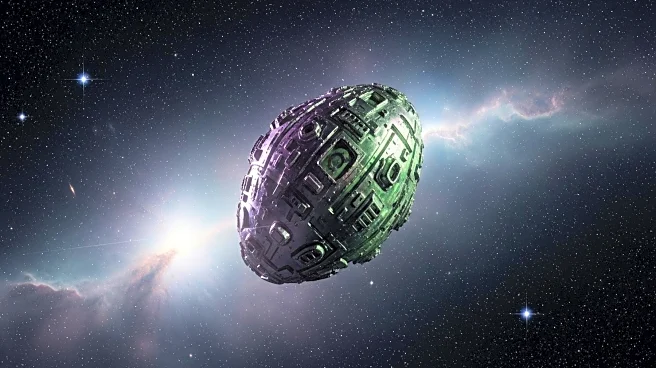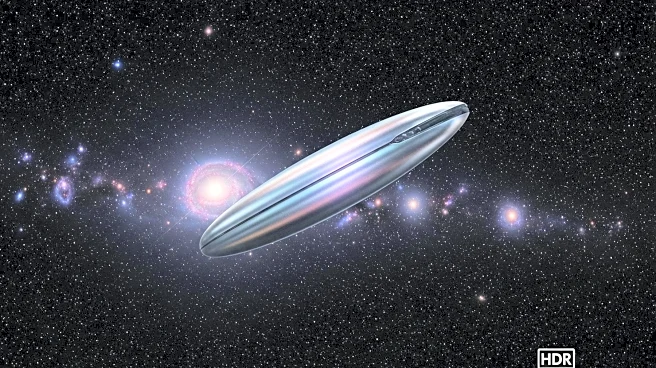What's Happening?
NASA's Voyager 1 spacecraft, launched in 1977, is on track to achieve a historic milestone in 2026. Originally designed to study Jupiter and Saturn, Voyager 1 has traveled beyond the solar system into deep interstellar space. On November 15, 2026, it is expected to be one Earth 'Light-Day' away, approximately 16 billion miles from Earth. This distance means that light, traveling at about 300,000 kilometers per second, would take a full day to reach the spacecraft. Voyager 1's journey represents a significant achievement in human exploration, as it continues to send back data from its position in space.
Why It's Important?
The milestone set by Voyager 1 underscores the remarkable achievements of human space exploration and the enduring legacy of NASA's missions. As the farthest human-made object from Earth, Voyager 1's journey expands our understanding of the universe and demonstrates the potential for long-term space exploration. This achievement highlights the capabilities of technology developed decades ago and its continued relevance in modern scientific research. The data sent back by Voyager 1 provides valuable insights into interstellar space, contributing to our knowledge of the cosmos and inspiring future generations of scientists and engineers.
What's Next?
Following its milestone in November 2026, Voyager 1 will continue its journey into interstellar space. On January 28, 2027, it is expected to reach a full light-day from the Sun, further extending its record as the most distant human-made object. As it travels, Voyager 1 will keep transmitting data back to Earth, offering a unique perspective on the outer reaches of our solar system and beyond. The mission's success may influence future space exploration strategies and inspire new missions aimed at exploring the farthest corners of our galaxy.
Beyond the Headlines
Voyager 1's journey raises important questions about the future of space exploration and humanity's role in the universe. The spacecraft carries a golden record with sounds and images of Earth, intended as a message to any potential extraterrestrial life. This aspect of the mission highlights the cultural and philosophical dimensions of space exploration, as it represents humanity's desire to connect with the cosmos. The continued operation of Voyager 1 also emphasizes the importance of investing in long-term scientific missions that push the boundaries of what is possible.

